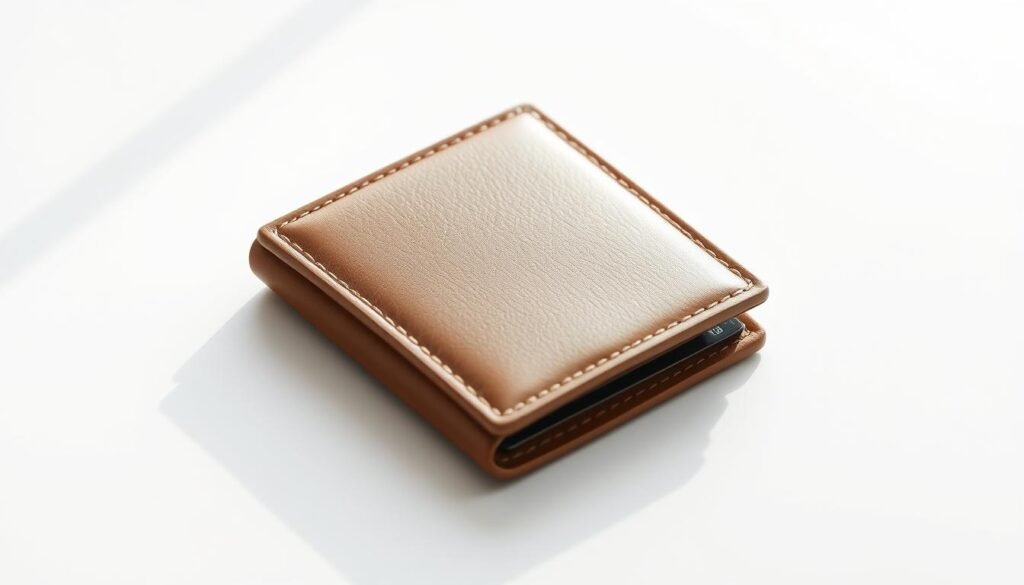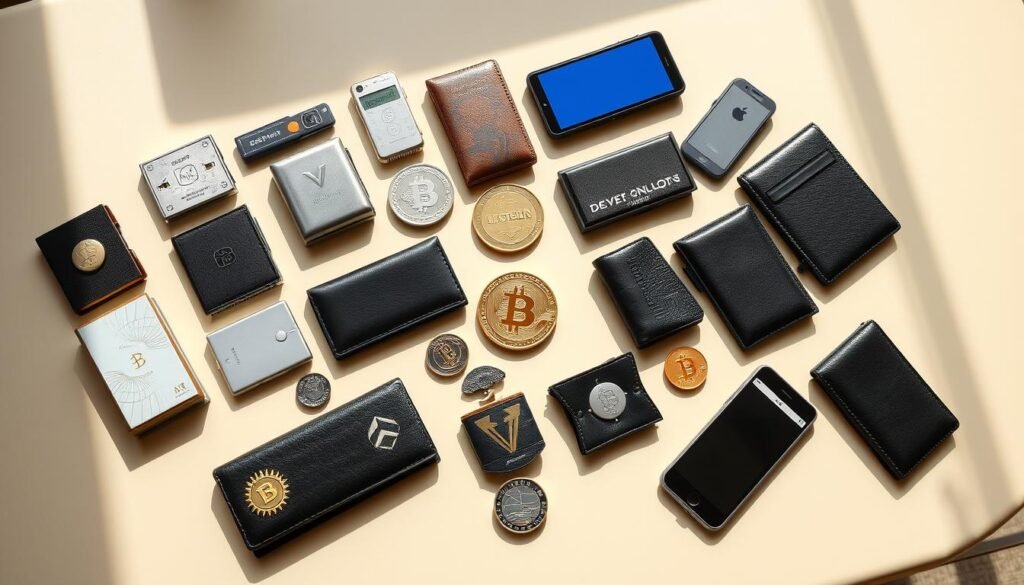
Find best crypto wallets USA secure storage 2026 for Your Assets

When your friend panicked after tapping an unfamiliar link on their phone, you felt the risk up close. They thought a prompt showed the right address, but the device hid the real calldata. That moment made a clear rule: always see what you sign.
In this guide you get a plain-English roadmap to pick a device that fits your needs today and keeps your funds safe tomorrow. We explain why on-device verification matters, and why readable signing prompts can stop bad transactions.
Security researchers in 2026 favor hardware that shows decoded calldata and clear prompts. Models like Trezor Safe 5 and Ledger Flex stand out for readable signing, while some devices fail to show calldata and add risk.
You'll leave with a short list for different uses, simple setup steps, and practical checks to avoid blind signing, fake apps, and weak backups. Use this as your action plan to make a confident, well-informed choice.
- Start here: how to choose a secure crypto wallet in the United States
- What a crypto wallet actually does: keys, signatures, and storage explained
- Hot vs. cold vs. custodial: wallet types you can use today
- Security features that matter in 2026
- Verification on device: seeing what you sign before you approve
- best crypto wallets USA secure storage: your short list by scenario
- Top hardware wallets compared for U.S. users
- Hardware wallet nuances: interfaces, displays, and usability
- Software wallets to pair with hardware for safer daily use
- Feature checklist you should demand before buying
- Common mistakes to avoid with private keys and backups
- U.S.-specific considerations: regulations, sanctions, and privacy tools
- Hands-on workflow: set up, verify, and test a secure transaction
- Your next secure step: pick a wallet combo and lock in best practices
Start here: how to choose a secure crypto wallet in the United States
Decide what you want from a wallet before you pick one spending every day or holding for years calls for different tools.
You’ll make better choices when you match your use to the wallet’s strengths. Hot options give quick access for payments and Web3 apps. Cold devices create keys offline and reduce exposure during transactions.

Your use case: everyday spending vs. long-term cold storage
If you pay often or test apps, prioritize speed and an intuitive app. If you hold sizable balances, prioritize a device that signs offline and shows transaction details on-screen.
Risk tolerance and budget: balancing convenience, cost, and security
Match budget to risk: free mobile apps suit small, frequent use. Hardware costs more up front but raise protection for large holdings. Decide how much friction you can accept extra steps often prevent costly mistakes.
- Multi-account support separates trading, holding, and testing.
- Authentication (2FA/MFA) and seed management aid recovery.
- Network switching and address books reduce accidental transfers.
- Pair a spending app with an offline device to approve final signatures.
| Need | Quick option | Safer option | Key feature |
|---|---|---|---|
| Daily payments | Mobile app | Hardware + companion app | Fast access, address book |
| Long-term hold | Hot backup | Cold device | Offline key generation |
| Testing & dev | Testnet-enabled app | Separate account on device | Network switching, multi-account |
For ongoing guidance and timely market context, see this recent market move that may affect user sentiment and adoption.
What a crypto wallet actually does: keys, signatures, and storage explained
A wallet's job is simple: it manages the keys that let you interact with the blockchain.
Public addresses, private keys, and seed phrases in plain English
Your wallet never holds coins. Your balance lives on the blockchain; the wallet proves control by managing keypairs that sign transactions.
Your public address is safe to share when you want to receive funds. Your private key is the secret that proves ownership. Treat that secret like cash—never type it into websites or store it online.

Many devices generate keys offline and sign messages inside the device. The device returns a digital signature to your computer or phone. That signature authorizes the transaction; the private key never leaves the device.
"A signature proves authorization without revealing the secret key."
- Think of your wallet as a key manager; the blockchain tracks the balance.
- Seeds back up your keys anyone with the phrase can restore access, so keep it offline.
- Always confirm addresses and transaction details on your device screen before approving.
| Concept | What it is | Why it matters | Action for you |
|---|---|---|---|
| Public address | Receive funds | Shareable | Use for deposits only |
| Private key | Proves ownership | Must stay secret | Never paste online |
| Seed phrase | Master backup | Full access if exposed | Store offline, test restore |
Hot vs. cold vs. custodial: wallet types you can use today
Your choice of wallet shapes how you interact with the blockchain every day.
Hot wallets browser extensions, desktop apps, and mobile clients give you speed and easy access for quick transactions and dApp interactions.
They are free and convenient, but they live online and increase exposure. Use them for small, daily balances and fast payments.

Cold wallets: hardware devices for offline protection
Cold options generate and keep keys offline. They require confirmations on the device, which helps prevent rushed mistakes with larger balances.
Cold hardware and hardware wallets cost more up front, but they reduce online attack surface and are better for long-term holdings.
Custodial wallets on exchanges: convenience with trade-offs
Exchange accounts make onboarding and recovery simple and add features like trading and staking. But the platform controls your keys, creating platform risk.
- Hot for daily use, cold for major holdings a hybrid approach often works best.
- Look for features you need: multi-chain support, address book, and clear backup flows.
- Always confirm addresses and avoid approving unclear permissions in dApps to limit risk during transactions.
Security features that matter in 2026
Security today hinges on hardware that proves its firmware and keeps private keys offline.
Favor devices with a secure element and offline key generation. These features make extraction and tampering far harder. Trezor Safe 5, for example, pairs open-source firmware with a secure element. Ledger devices give strong firmware verification but are closed-source.
Verify firmware updates before you install them. Signed, verifiable updates cut the chance that malicious code slips in during an upgrade.
Open-source vs. closed-source and reproducibility
Open-source code lets developers and the community audit behavior. Reproducibility ensures the binary you run matches the source.
Closed-source tools can still be robust, but you trade community scrutiny for vendor trust. OneKey Pro had solid hardware yet failed reproducibility in tests. Grid Lattice Plus shines at decoded transaction visibility despite being proprietary.
Backups, seed phrase hygiene, and recovery
Generate your seed phrase offline and never photograph it. Use metal backups for durability and keep copies apart.
Test recovery with a small amount before you trust a backup. If you hold meaningful value, consider multisig or multiple devices to avoid a single point of failure.
| Feature | Why it matters | Action for you |
|---|---|---|
| Secure element | Reduces extraction risk | Choose devices with hardware protection |
| Firmware verification | Stops tampered updates | Only update from official, signed releases |
| Reproducibility | Enables independent audits | Prefer open-source or reproducible builds |
- Keep notes on your setup and recovery steps so you can act under stress.
- Pick tools that show transaction details on-device so you can verify what you sign.
Verification on device: seeing what you sign before you approve
Before you tap approve, make the device screen your single source of truth.
EIP-712 signatures add structure, but you still need the device to confirm domain and message hashes. Ledger Flex and Nano X surface those hashes so you can match the app claim to the on-device view.
EIP-712, hashes, and calldata visibility
Why it matters: Grid Lattice Plus decodes calldata into readable actions, which helps you spot altered approvals or transfers.
Trezor Safe 5 shows full raw calldata but doesn’t decode it. Keystone attempts decoding but is inconsistent. Tangem and Cypherock often omit calldata, creating blind signing risk seen in incidents like Radiant Capital and Bybit.
Practical checks to avoid costly mistakes
- Confirm on the device screen, not only your computer.
- Prefer devices that show domain/message hashes for EIP-712.
- If no decoding is present, view raw calldata and compare with a trusted decoder before approving.
- For high-value approvals, verify token addresses, amounts, spenders, and expirations on the device.
| Device | Calldata | Decode |
|---|---|---|
| Ledger Flex | Hashes shown | No |
| Trezor Safe 5 | Raw calldata | No |
| Grid Lattice Plus | Decoded | Yes |
"Pause, verify, then sign this habit can prevent major losses."
best crypto wallets USA secure storage: your short list by scenario
This short list matches common use cases to tested devices so you can pick a setup that fits your workflow.
Security-first picks focus on on-device verification and clear signing prompts. They suit holders who value transparency and readable approvals.
Security-first: Trezor Safe 5, Grid Lattice Plus, Ledger Flex
Choose the Trezor Safe 5 if open-source code, a secure element, and raw calldata visibility matter to you.
Pick Grid Lattice Plus when decoded, human-readable transactions on a big screen help you verify complex approvals.
Consider Ledger Flex if you prioritize on-device domain and message hash display and you accept closed-source trade-offs.
DeFi and Web3 power users: MetaMask paired with a device
For heavy DeFi activity, pair MetaMask with a hardware wallet so approvals and transfers are signed offline while you keep dApp convenience.
- Keep small balances in a hot app for daily use and move long-term holdings to cold wallets.
- Always verify token and spender addresses, amounts, and permissions before approving transactions.
- Test your recovery process now so you can restore access if something goes wrong.
- Update firmware only from official sources and read release notes before applying changes.
| Need | Device | Key advantage |
|---|---|---|
| Open-source review | Trezor Safe 5 (trezor model) | Raw calldata + secure element |
| Readable transactions | Grid Lattice Plus | Decoded calldata on large display |
| Hash verification | Ledger Flex (ledger nano family) | Domain/message hashes shown |
Make a choice that matches your time and risk tolerance the best solution is the one you maintain.
Top hardware wallets compared for U.S. users
Focus on what each device actually shows on its screen that view decides your risk.
Trezor Safe 5 suits technical reviewers who want open-source assurance. It pairs an EAL6+ secure element with a larger touchscreen and shows full raw calldata so you can inspect every detail.
Ledger Flex improves ergonomics over the ledger nano family and surfaces domain/message hashes for EIP-712 signatures. Its closed-source format and compact calldata display are caveats to note.
Grid Lattice Plus offers best-in-class decoded transaction text, including nested actions, on a generous display. It lacks a raw calldata view, which limits deep forensic checks.
OneKey Pro blends air-gapped workflows, an EAL6+ secure element, and readable prompts. Reproducibility checks failed in tests, and it does not show domain/message hashes.
- Prioritize transparency (open-source + reproducibility) or readability (decoded display) based on your workflow.
- Test a small transaction to confirm address and prompt behavior before moving large sums.
| Device | Security element | Calldata view | Notes / pros |
|---|---|---|---|
| Trezor Safe 5 (trezor model) | EAL6+ | Raw calldata shown | Open-source, full data for audits |
| Ledger Flex (ledger nano family) | Secure element | Hashes for signatures | Good ergonomics, closed-source caveat |
| Grid Lattice Plus | EAL6+ | Decoded only | Readable nested transactions, no raw view |
| OneKey Pro | EAL6+ | Calldata shown, no hashes | Air-gapped mode, reproducibility concerns |
Hardware wallet nuances: interfaces, displays, and usability
The way a device shows information changes the odds you spot a bad approval.
Interfaces differ and that affects how you interact with your wallet. Trezor Safe 5 and Grid Lattice Plus give roomy touchscreens. Ledger Flex uses refined buttons and longer active time. Keystone adds QR-driven, air-gapped flows but its decoding proved inconsistent in tests.
- Touchscreens can show long details; buttons reduce accidental taps and improve precision.
- Larger screens let you read more and lower the chance you miss hidden fields.
- QR workflows cut cables and help air-gapped signing if on-device decoding is reliable.
- Timeouts that force rushing raise risk; prefer sensible or configurable defaults.
- Haptics, scrolling, and text layout change how clearly you verify addresses and amounts.
Also try each device with the apps you use, like MetaMask or a multisig interface. If the UI truncates or hides fields, you may end up approving blindly. Favor devices that let you revisit each field before confirming.
| Device | Interface | Notable UX trait |
|---|---|---|
| Trezor Safe 5 | Touchscreen | Large display for raw calldata review |
| Grid Lattice Plus | Touchscreen | Extensive screen real estate, good for nested actions |
| Ledger Flex | Buttons | Improved press feel, longer active timeout |
| Keystone | QR workflow | Air-gapped option; decoding inconsistent in tests |
Software wallets to pair with hardware for safer daily use
Combining a mobile or browser client with a connected device gives you familiar UX and safer signing.
MetaMask: dApp access with device-backed signing
MetaMask remains the go-to for Web3 dApps. Connect a hardware wallet so the app handles browsing while the device signs transactions offline.
This setup reduces exposure of your private keys during DeFi interactions and custom network testing.
Coinbase Wallet: friendly non-custodial interface
Coinbase Wallet offers a beginner-friendly interface across mobile and browser. It supports ERC-20 and EVM tokens without needing an exchange account.
Pair it with a hardware wallet if you plan to keep larger sums or approve new dApp permissions.
Trust Wallet: mobile convenience and staking
Trust Wallet excels on mobile with multi-asset support and staking features. Use it for day-to-day ease, and delegate high-value approvals to a connected device.
"Keep the app for browsing and the device for signing separate duties lower your risk."
- Let the app manage browsing, address books, and ENS while the device shows final prompts.
- Always verify the address and action on the device before confirming in the app.
- Keep apps updated from official sources and avoid lookalike extensions or fake apps in stores.
- Use separate accounts or networks for testing and real funds to limit costly mistakes.
- Don’t back up seeds to cloud services; pair app convenience with offline recovery practices.
| App | Strong point | When to pair with a device | Notes / cautions |
|---|---|---|---|
| MetaMask | DeFi access, custom networks | Always for meaningful approvals | Watch for malicious dApp approvals |
| Coinbase Wallet | Beginner UX, broad token support | Pair when moving larger balances | No exchange account required |
| Trust Wallet | Mobile staking, multi-asset | Pair for risky approvals or big stakes | Mobile-only risks; use device for safety |
Feature checklist you should demand before buying
Before you buy, set a clear checklist so product pages become decision tools, not distractions.
Use this short checklist to compare candidates on the things that matter in daily use and long-term protection. Score each item honestly and keep notes on how the device or app behaves during a test transaction.
Multi-currency support, network switching, and address book
Demand multi-account and multi-currency support so you can separate long-term holdings, trading, and test accounts.
Check for easy network switching including testnets, and a reliable address book with labels to reduce copy-paste errors.
Staking, DeFi integrations, pricing data, and push notifications
Look for clear DeFi and staking integrations that show permission details before you sign. Real-time pricing, alerts, and analytics help you act without juggling multiple apps.
Confirm import/export options and hardware compatibility so you can move funds between tools or an exchange if needed.
- Strong authentication (2FA/MFA) and session controls to limit unauthorized access.
- Well-documented backup and recovery steps you can test now, not later.
- Clean, responsive interface that surfaces critical information without clutter.
| Must-have | Why it matters | Quick check |
|---|---|---|
| Multi-account | Segregates funds and risk | Create two accounts and move a test token |
| Network switching | Testnets reduce costly mistakes | Switch to testnet and send a small tx |
| Address book | Prevents paste errors | Add and reuse a labeled address |
"Score each feature and use the checklist as a final gate before you commit to a purchase."
Common mistakes to avoid with private keys and backups
Simple habits around keys and backups prevent most avoidable losses. Follow a few clear rules so you do not end up scrambling after a bad transaction or a lost device.
Common pitfalls
Blind signing happens when a device does not show calldata or decoded actions. If you cannot see what a transaction will do, stop and investigate.
Fake apps and extensions imitate trusted software. Always download a wallet from the official site or a verified app store and check the developer name and reviews.
Practical fixes you can apply now
- Never store your seed phrase in cloud notes or photos; use offline, durable backup methods.
- Use strong, unique passwords and change them if any linked account shows odd activity.
- Verify recipient addresses on your device screen to avoid address poisoning.
- Run a small test transaction after updates or device swaps before moving larger sums.
"Pause when prompts are unclear; a confused prompt is a red flag."
| Risk | What it looks like | Quick action | Why it matters |
|---|---|---|---|
| Blind signing | Device hides calldata | Decline and use a device that shows details | Prevents unintended token approvals |
| Fake app | Imposter extension or clone | Install from official site, verify developer | Avoid credential or seed theft |
| Poor backup | Photo or single paper copy | Use metal backup or split seeds; test restore | Ensures recovery after loss or damage |
U.S.-specific considerations: regulations, sanctions, and privacy tools
Before you try mixing tools or new privacy services, check current U.S. guidance the legal landscape moves quickly.
Privacy tools like mixers have faced sanctions in the U.S. and EU, and that creates compliance risk for any account or wallet you use. If you plan to use such services, research sanctions lists and official guidance so you understand legal exposure before you transact.
Mixers, compliance risk, and why open-source scrutiny helps
Open-source code lets independent developers audit behavior and spot hidden vulnerabilities. That extra scrutiny often improves safety beyond vendor claims.
- Centralized platforms can freeze funds to meet compliance; decide how much you keep on an exchange versus a device.
- Keep clear records of transactions and approvals to simplify tax reporting and any compliance questions.
- Assess DeFi permissions carefully approvals can persist and expose funds long after a single transaction.
| Risk | What to check | Action |
|---|---|---|
| Sanctions on mixers | Current guidance and lists | Avoid sanctioned services; consult legal info |
| Custodial freezes | Exchange policy and terms | Limit on‑exchange balances; keep records |
| Traceability | Blockchain analytics | Minimize address reuse; limit approvals |
Stay updated and pick tools with transparent disclosures and frequent updates. For privacy-conscious browsing and to reduce data leaks during your research, consider a privacy-focused browser.
Hands-on workflow: set up, verify, and test a secure transaction
Before moving anything meaningful, run a full, low-risk test that exercises setup, signing, and recovery.
Initialize the device by unboxing offline, set a PIN, and generate your seed phrase on-device. Do this away from cameras and public networks.
Connect the device to your chosen software wallet (for example, MetaMask to a Safe Wallet UI). Confirm the receive address shown on the app exactly matches the device screen.
Simulate an EIP-712 signing and a small transaction
Send a tiny deposit, then return it. Confirm each step on the device display so you see addresses, amounts, and any prompts.
If your device shows domain/message hashes (like Ledger Flex), verify them. If it shows full calldata (like Trezor Safe 5), compare the raw data with a trusted decoder before signing.
Backup drills: restore from seed phrase to validate recovery
Practice a recovery on a fresh device or app using your seed phrase and a minimal balance. This proves your backup works and teaches you the restore steps.
- Practice rejecting suspicious prompts so you build the habit of saying no.
- Document each step and store those instructions with your backup material.
- After successful tests, scale up slowly and review allowances regularly to limit exposure.
"Validate the whole path setup, signature, and recovery before you trust large amounts."
| Step | Why | Quick check |
|---|---|---|
| Initialize offline | Protect seed and PIN | Device generates seed without a computer |
| Test transaction | Verify on-device prompts | Send and return a tiny amount |
| Recovery drill | Confirm backup integrity | Restore from seed on a fresh device |
Your next secure step: pick a wallet combo and lock in best practices
Wrap up your setup by choosing a practical device-plus-app pairing you will actually keep using.
Pick a combination that fits your routine: a hardware device for long-term storage plus a trusted app for daily use. Trezor Safe 5 fits open-source review, while Grid Lattice Plus and Ledger Flex offer readable verification. OneKey Pro is easy to use but had reproducibility flags.
Document and test your recovery plan with small amounts. Update firmware only from official channels and verify on-device prompts for every transaction.
Keep most funds offline, leave a small hot balance for spending, and review allowances and connected apps regularly. Your best path balances confidence with daily practicality.
If you want to know other articles similar to Find best crypto wallets USA secure storage 2026 for Your Assets you can visit the category Investing.






Leave a Reply